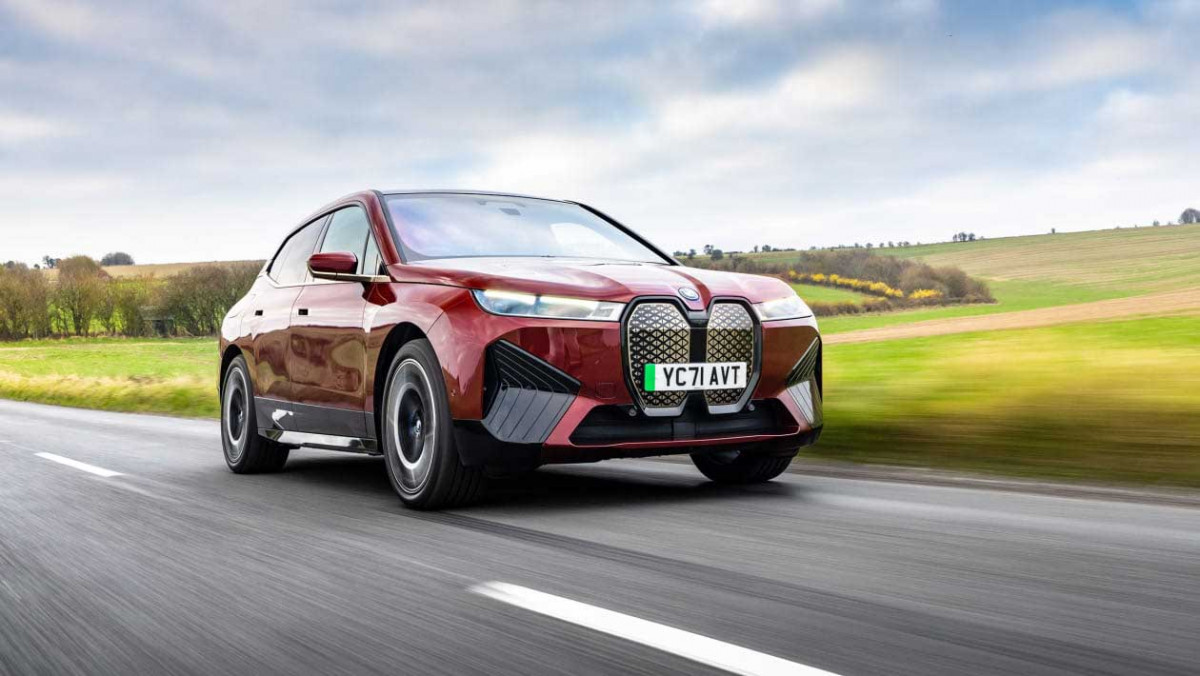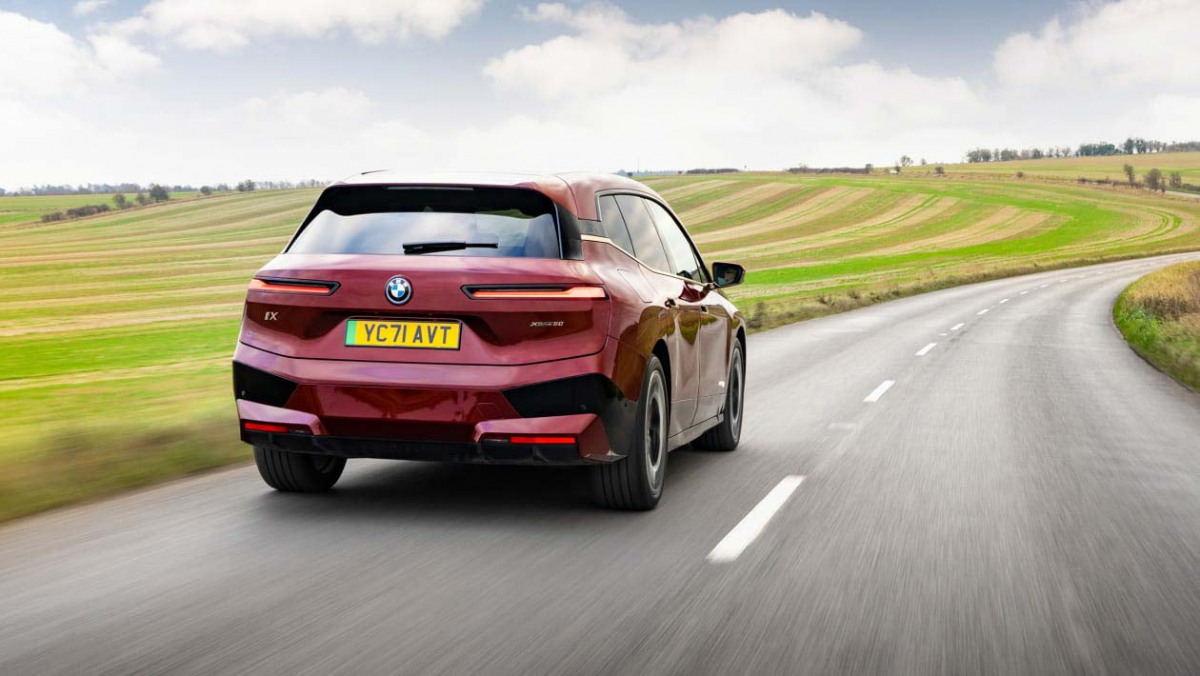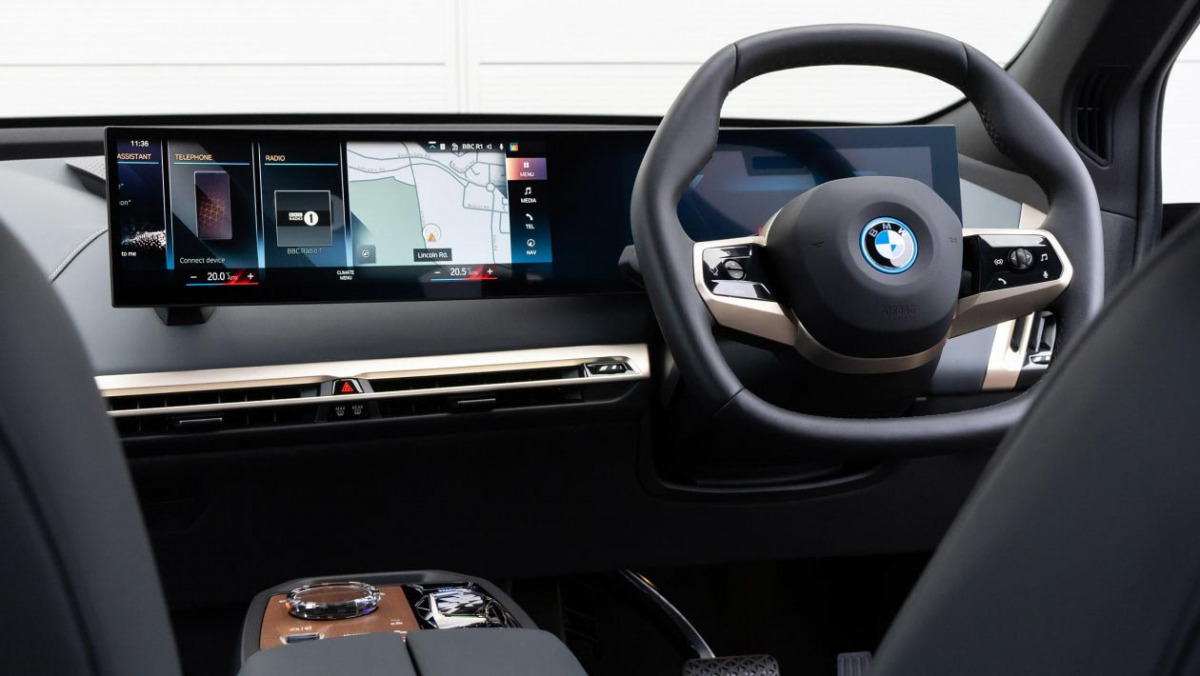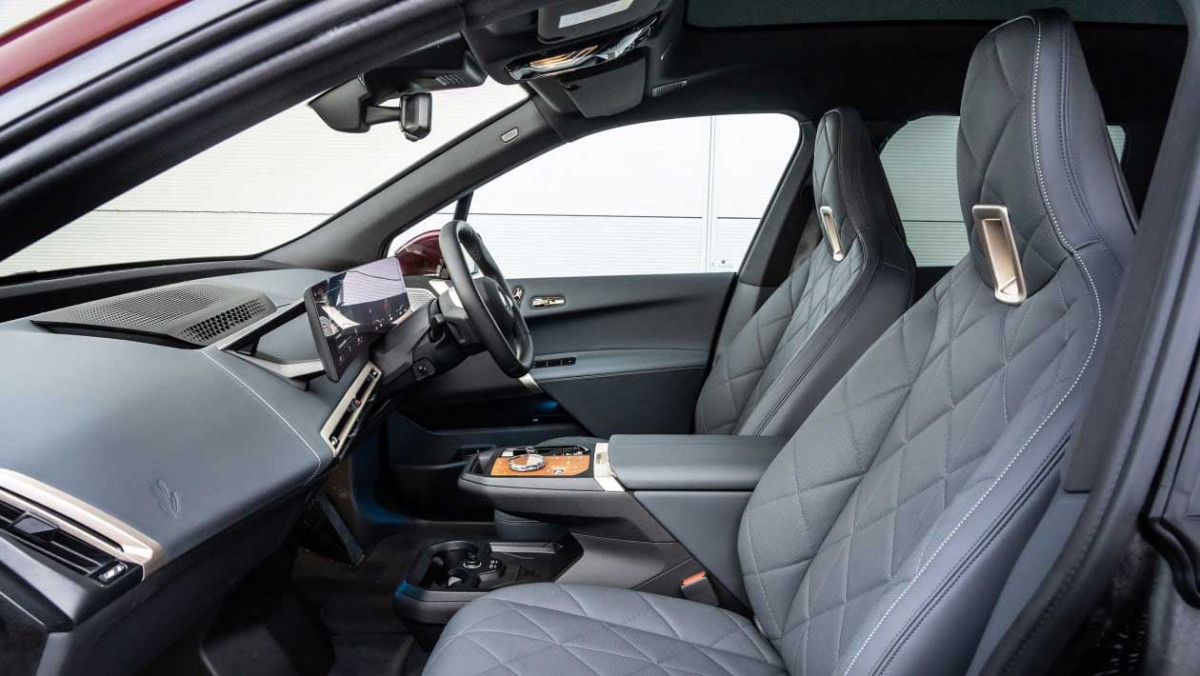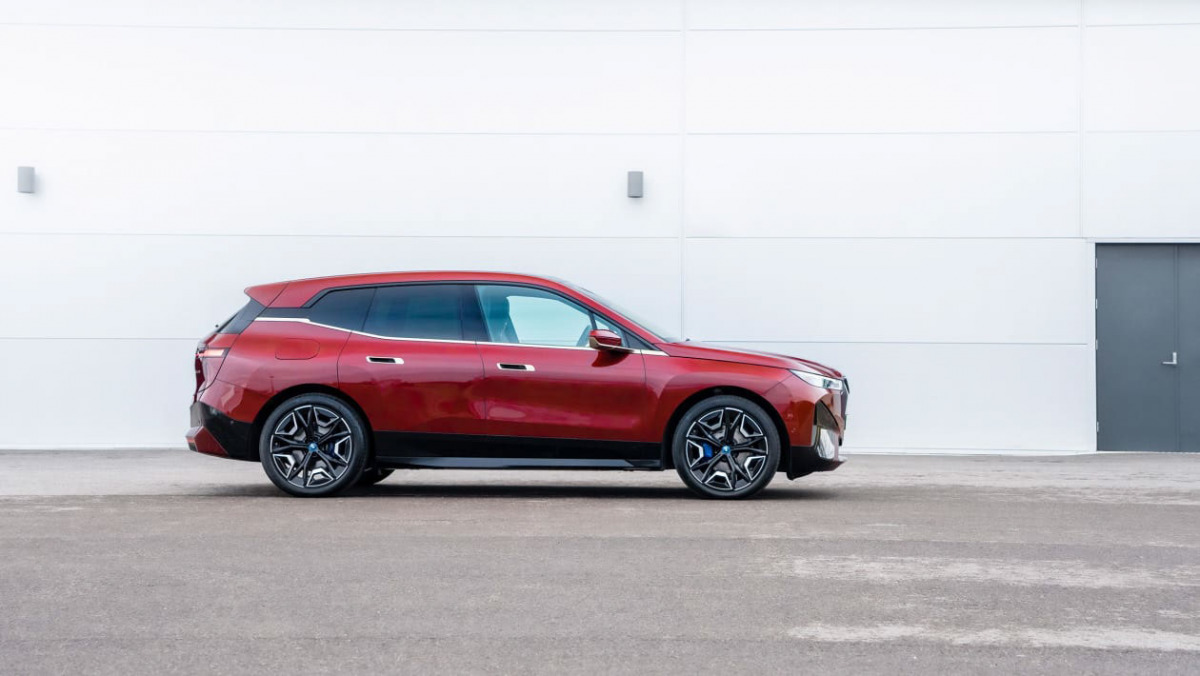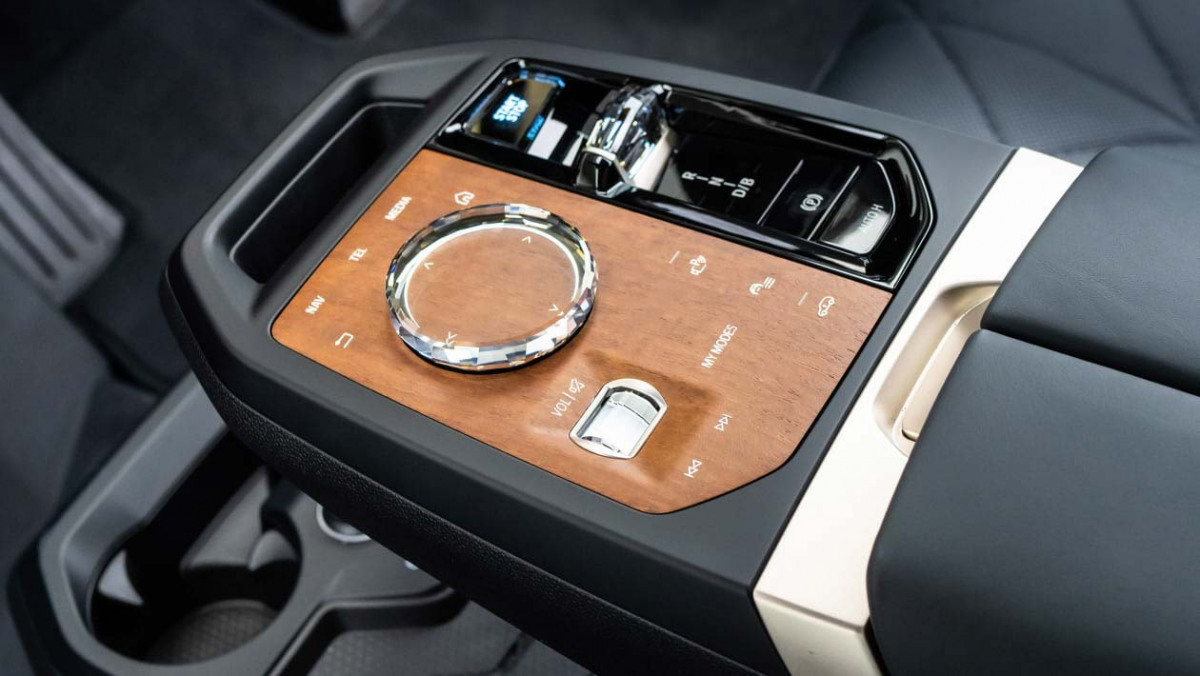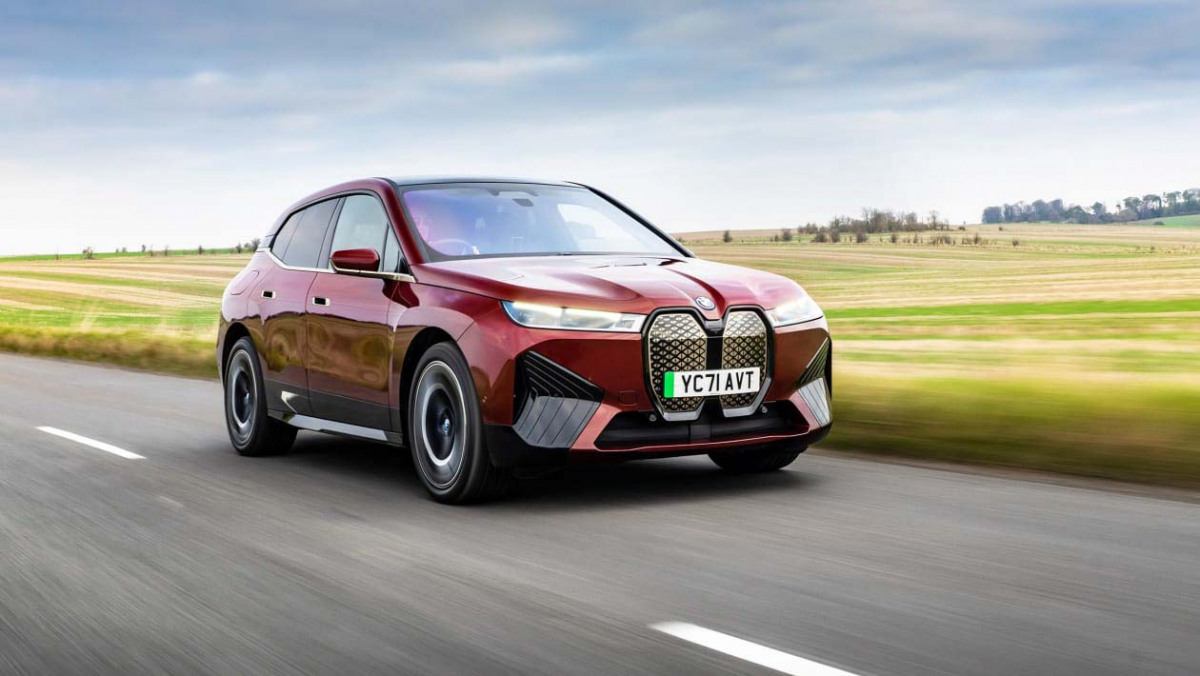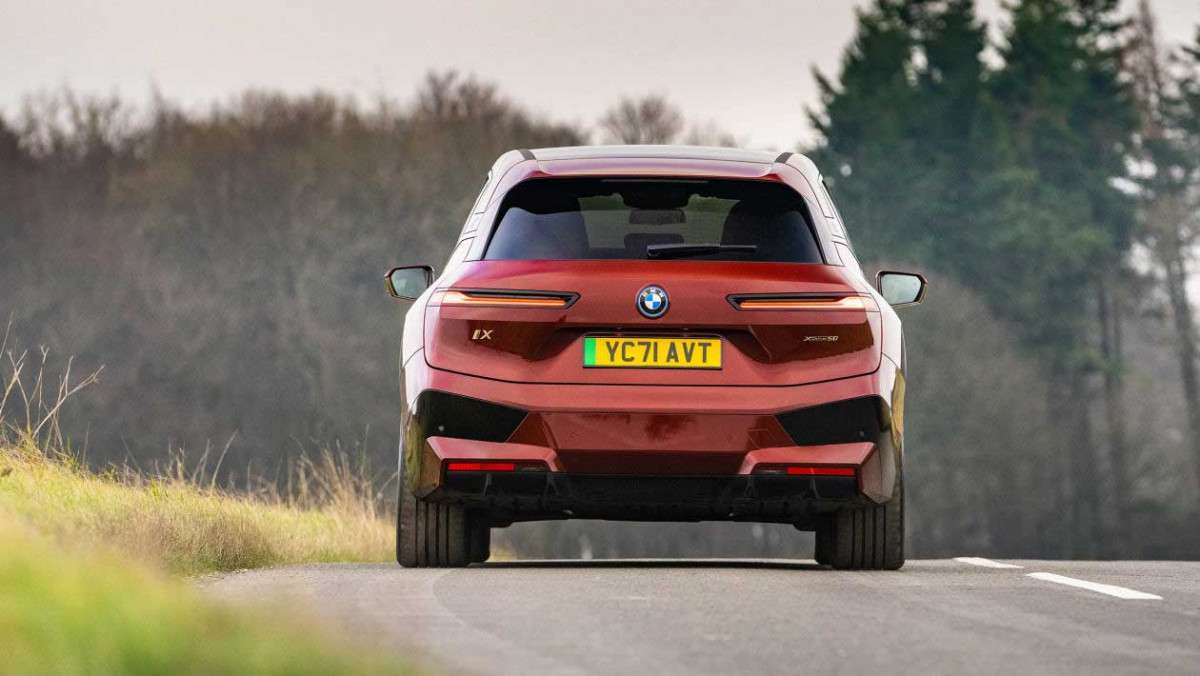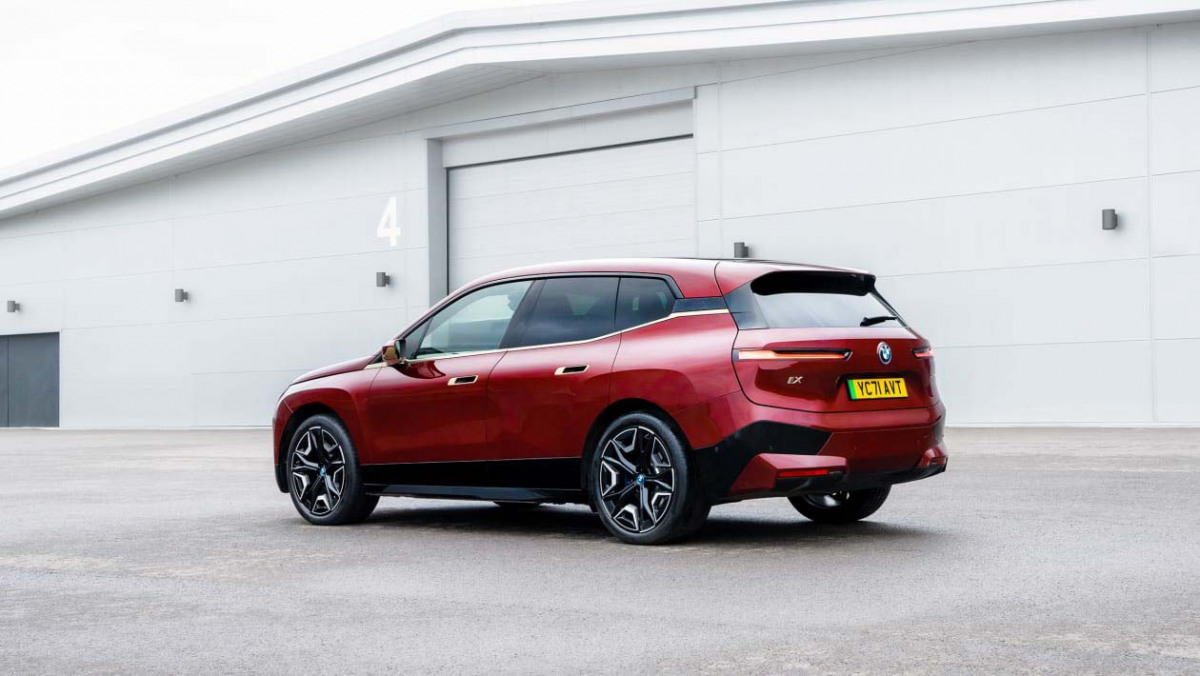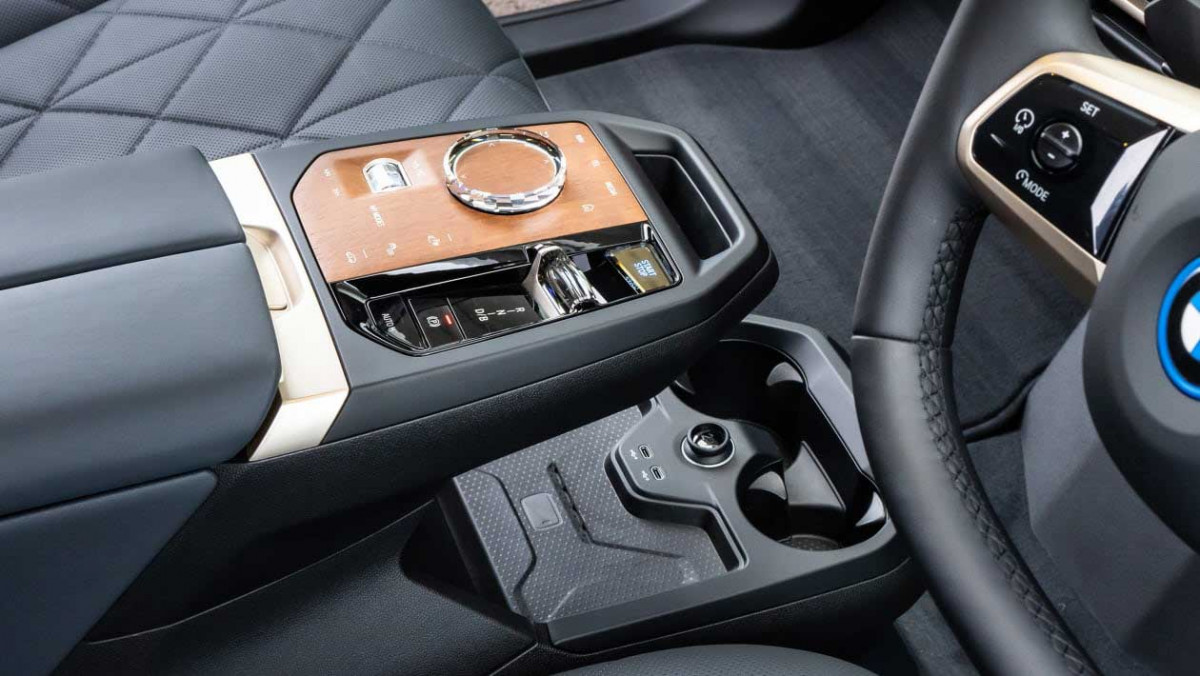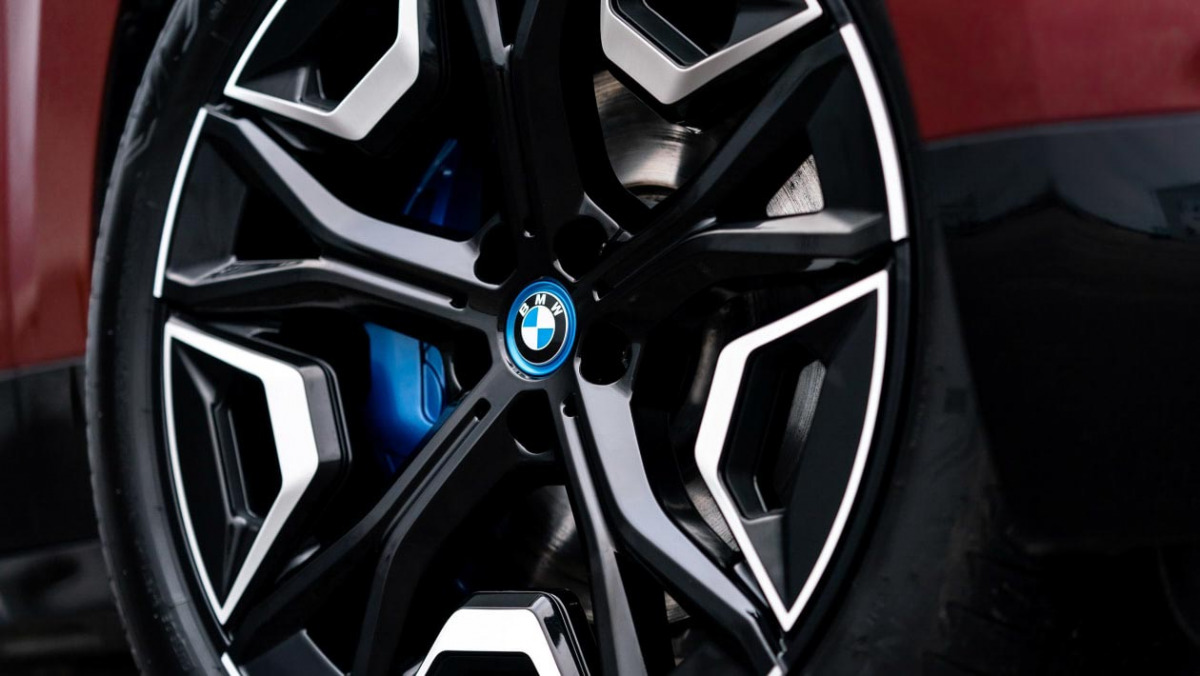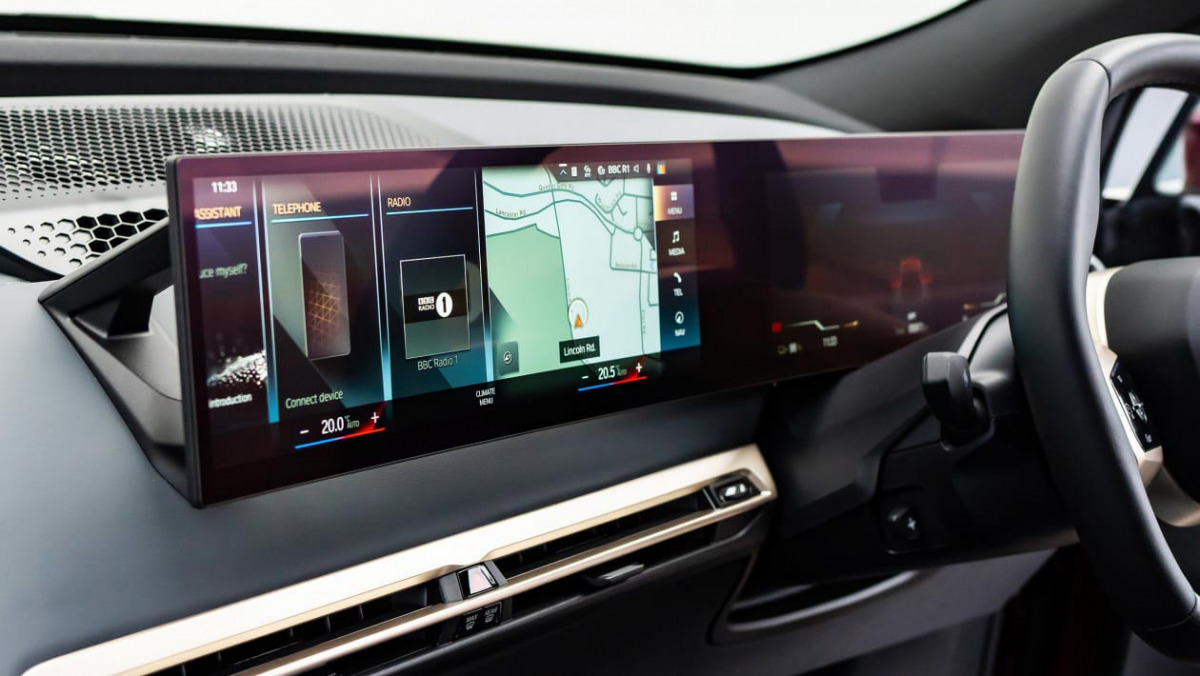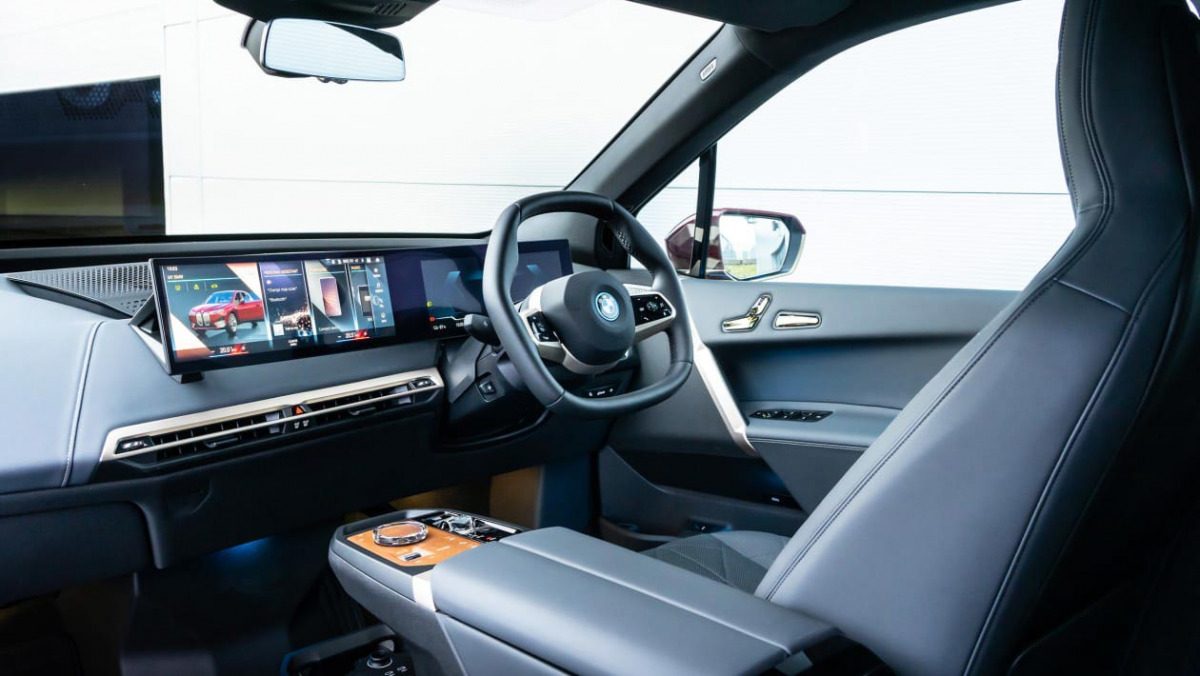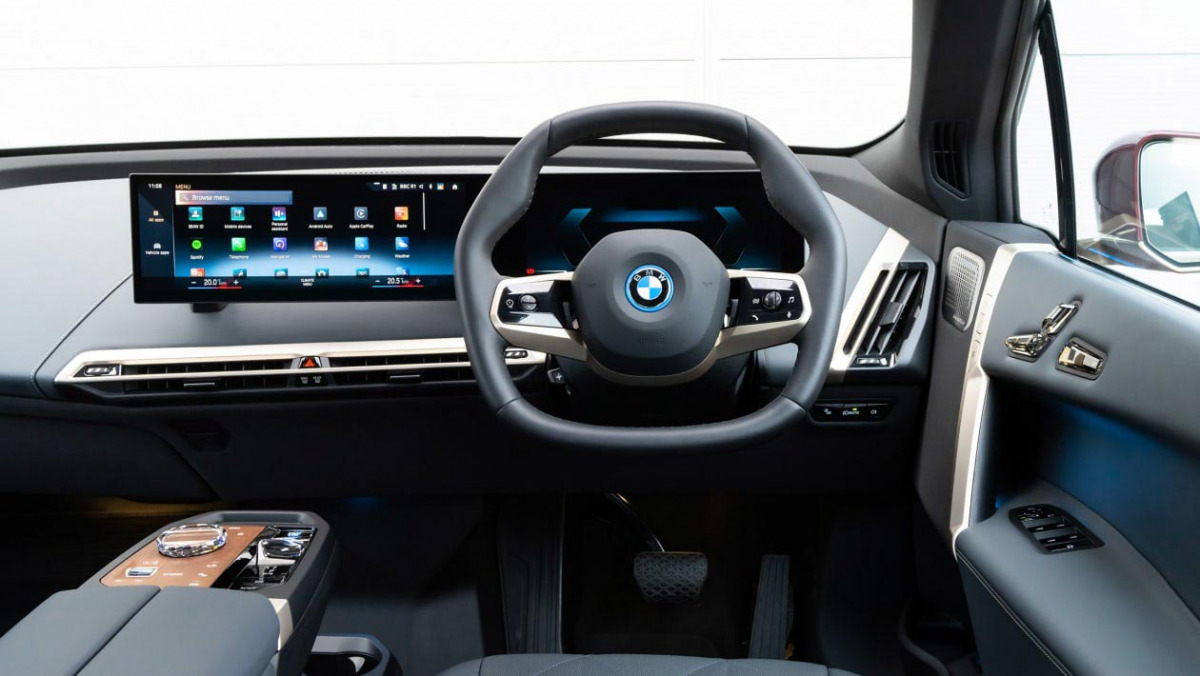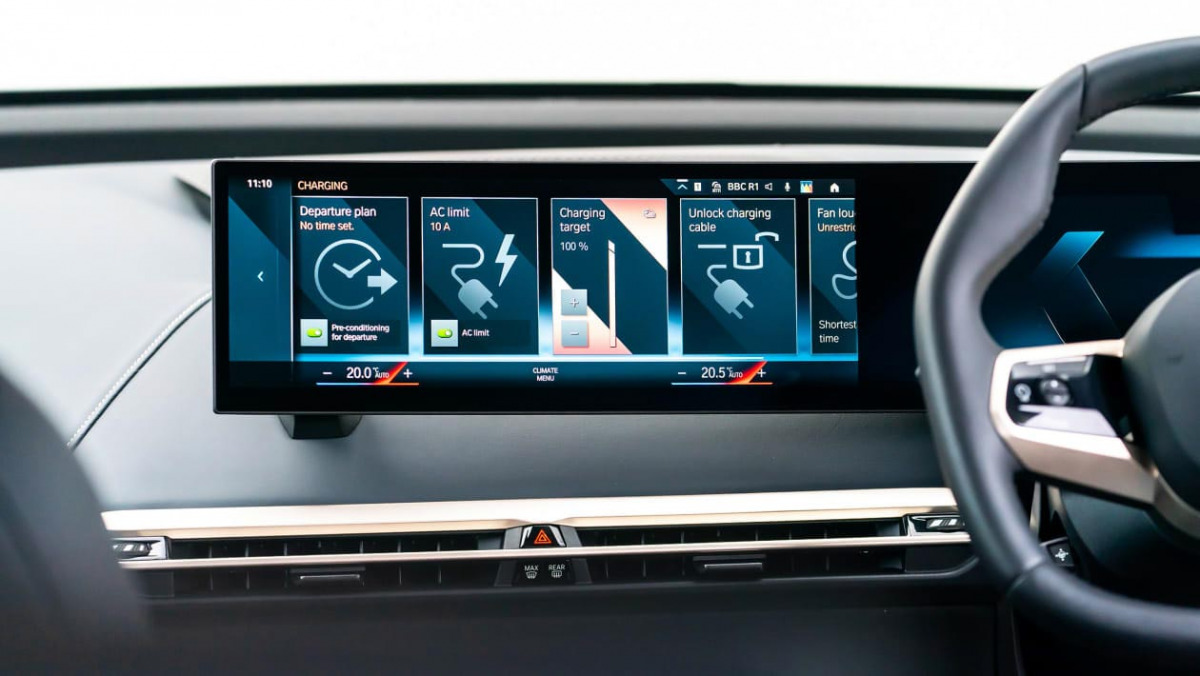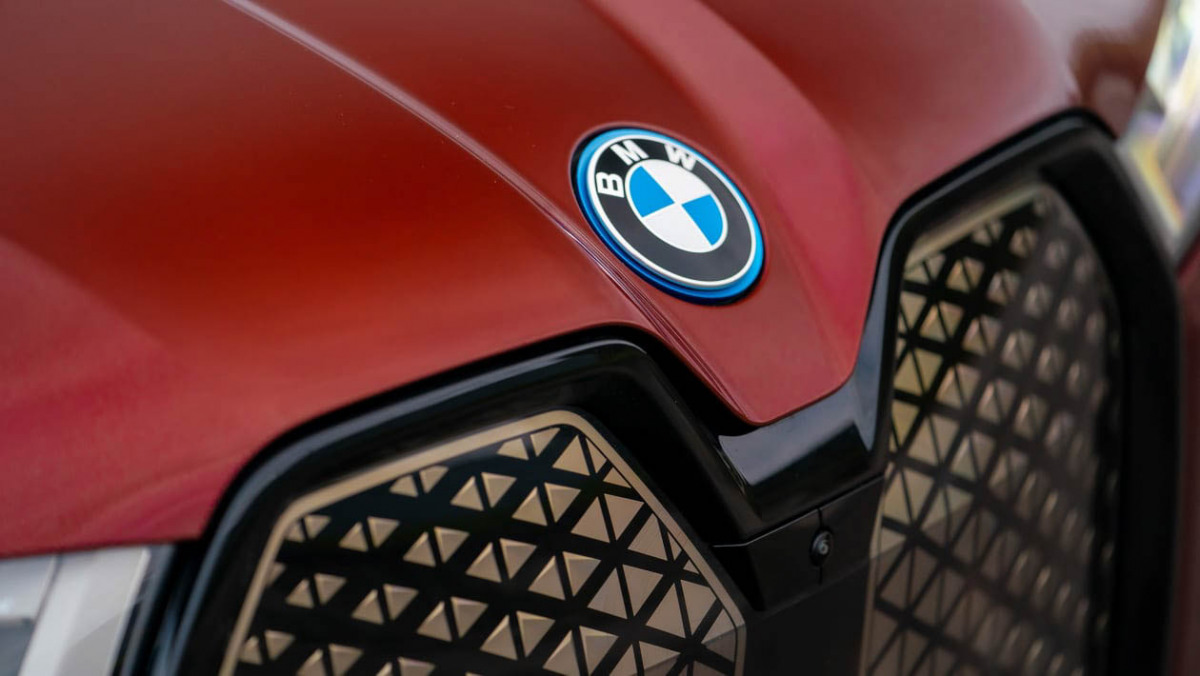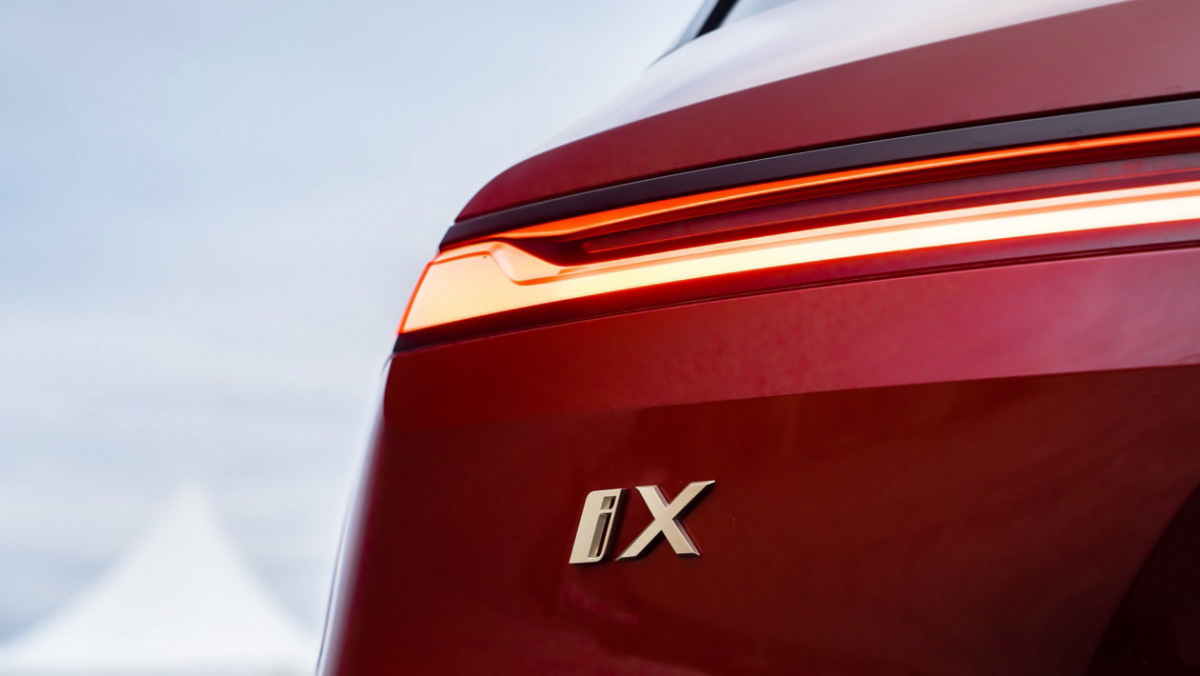A quantum leap in automotive engineering, if you’re OK with it taking the form of a 2500kg SUV
| Brilliant interior design and quality, superb ride and refinement, powertrain calibration | ||
| Challenging exterior design | question marks over scale |
I think it’s important, before we get into what the BMW iX is like to drive, to confront its greatest and possibly only real flaw. This is, broadly speaking, an ugly car. Now before you press the page-back button thinking that I’m about to get waist deep in design criticism (that’ll still to come, don’t worry), I make that statement regardless of the iX’s design. The iX is ugly because somewhere in the journey of the motor car, it’s led BMW to establish that its beacon of progress for the EV age must be in the form of something as large and expensive as this huge SUV.
So it’s almost annoying that despite my reservation as to its form, the iX really is one of the best electric cars on sale right now, certainly a match for the Porsche Taycan in regards to engineering progress, but with an even more audacious undercurrent to its design, development and execution.
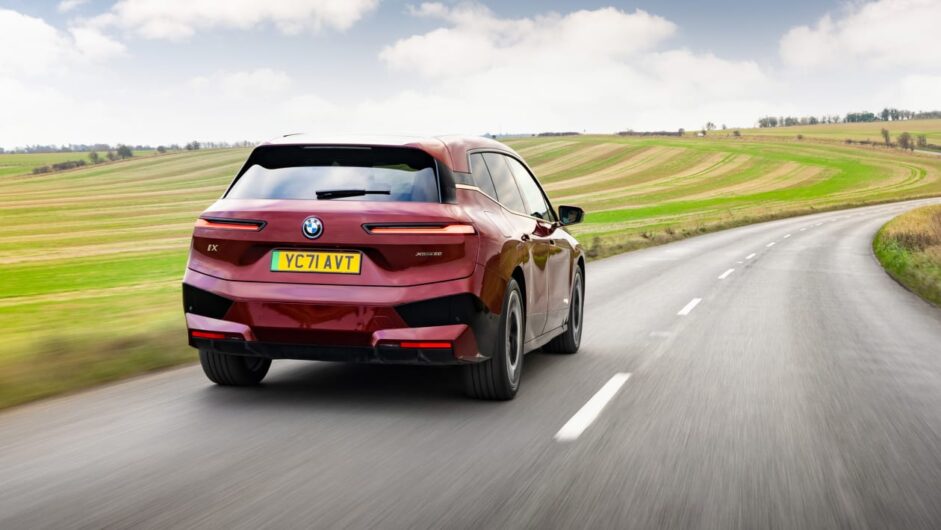
Fundamentals first: this is a BMW X5-sized all-electric SUV that’s been designed from the ground up, rather than a mesh of existing BMW underpinnings modified to fit – as in the i4 and iX3. This much is obvious as soon as you open the door, as not only is the floor entirely flat across the whole cabin, but the door sills proudly show off the iX’s strategic use of carbonfibre in the chassis – although not as extensively as the i3.
With its new platform, so BMW has emphasised this technical freedom with an unusual set of proportions that err more on the side of ‘minivan’ than ‘tough SUV’ on account of its forward placement of the A-pillars and low beltline. You can make your own mind up about whether you like the way it looks, but fundamentally it’s a design underpinned by an awkward set of proportions that pairs some brilliant detailing (slim lighting, door handles and wheel designs) with rather odd surfacing – I had a small panic on several occasions thinking the door had been driven into.
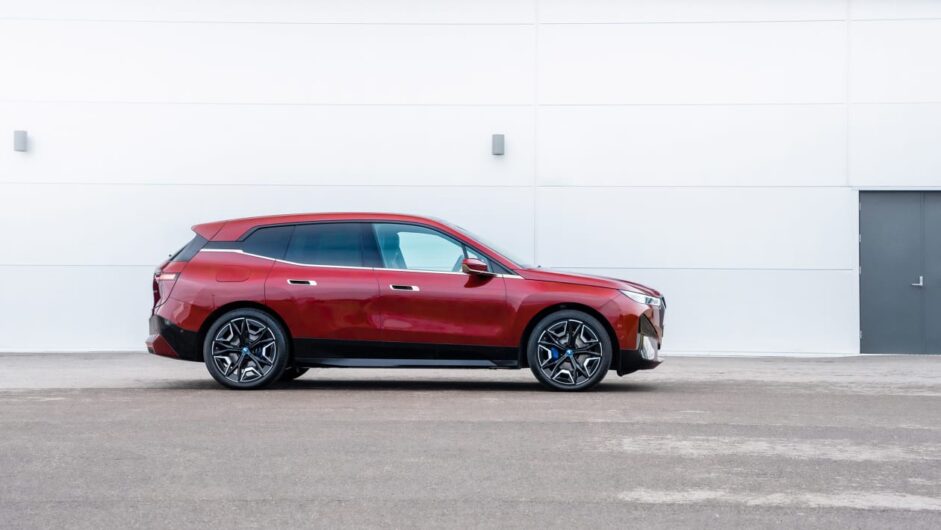
The interior, however, is a complete triumph – a masterstroke in design and detailing. Its minimal design, not unusual in modern EVs, isn’t defined by what’s missing, but by the few elements that are integrated and their frankly stunning quality. The curved display is the dominant element of the interior, mounted clear of the upholstered dash on brackets that look like they could be found in a Frank Gehry foyer. The materials are just as fascinating – the plant-based leather-like material on our example was soft and lustrous, and paired with a contrasting fabric that together created an interior ambiance unlike that of any rival.
BMW’s new interfaces within the curved display are very function-heavy and do require some time to understand, but it’s a system that quickly fades into the background once it’s been set up to your individual preferences. Critically, key elements are all accessible on the centre console’s control grouping, which still features the main click-wheel controller (although the main display is also touchscreen), plus supplementary controls and shortcuts that mean you might never need to use the touchscreen if you’re fingerprint averse.
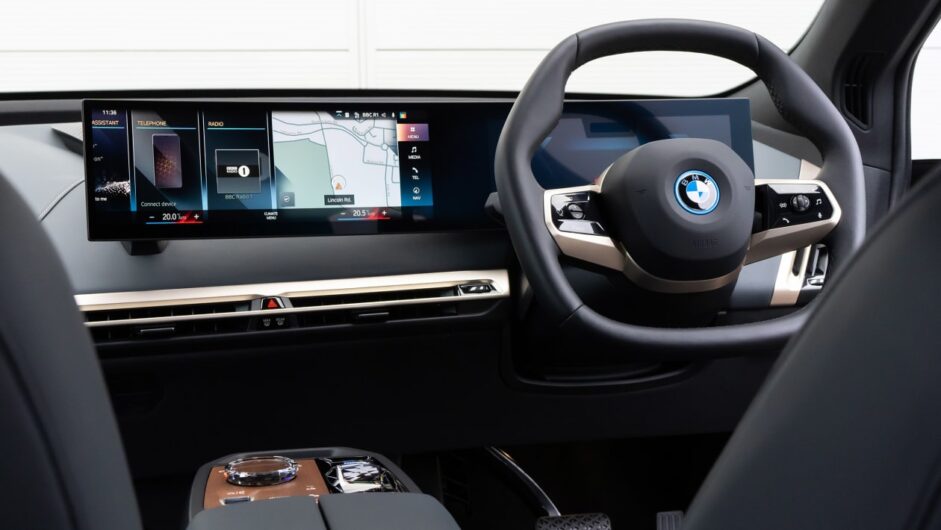
The iX is available in three forms – a base xDrive40 model which pairs a 321bhp combined electric motor output to a 71kWh battery pack, a top-spec 610bhp xDrive M60 and this 516bhp xDrive50. Both 50 and M60 models feature a bigger 105kWh battery pack, giving them an estimated WLTP range figure of around 580-610 kilometers in prime conditions. On the move, the xDrive50 feels completely effortless, with excellent calibration from both the throttle and brake pedals that make them feel natural and responsive. The steering does have a quick rack, something exaggerated further by the rear-wheel steering, but you quickly acclimatise to it, and thanks to good lateral control the iX never feels uncontrolled or uncouth.
Yet this steadfast body control doesn’t come at the expense of comfort, as even on its largest 22-inch wheel and tyre package the iX rides beautifully on its standard air suspension. It goes beyond just having excellent bump absorption, as there’s also a very clear connection to the road surface. It also doesn’t exhibit any of that subtle shuddering that often afflicts cars on air springs when cornering under load, nor the inability to handle sharp drops in the tarmac as they struggle to react in time.
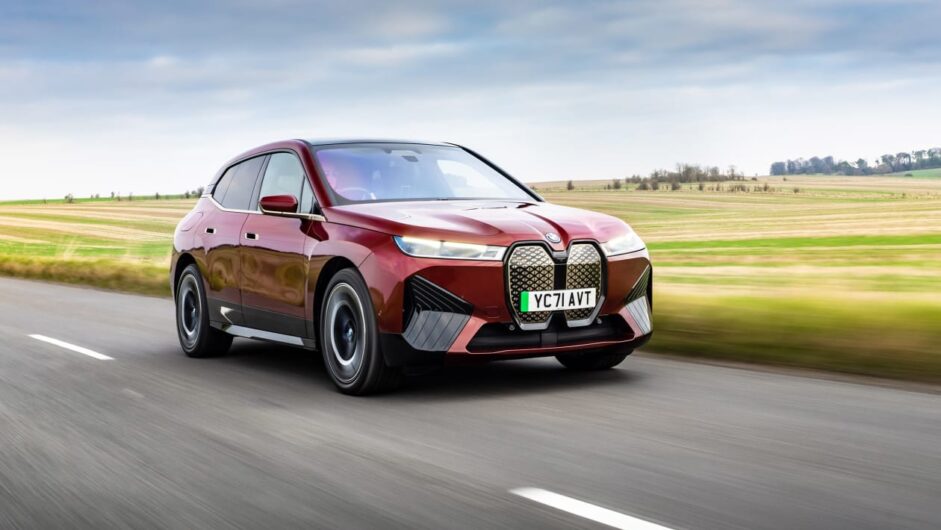
This is by no means a Porsche Taycan to drive – it’s just too big and heavy to be engaging – but it’s very capable, and never feels anything like as clumsy as a 2510kg SUV should. Factor in its incredible refinement on account of its ability to isolate noise sources such as tyre or road roar, it makes for a brilliant luxury car, not just a brilliant luxury SUV.
As you might guess, I genuinely enjoyed my time with this car. While I might take issue with its final form, what iX does and how it does it, is truly exceptional – a quantum leap in both how superbly polished and resolved it is to drive, and a prime example of how much progress BMW has made in electric vehicle engineering. The issue lies in the sheer amount of car you need to purchase to experience BMW’s latest generation of true innovation.
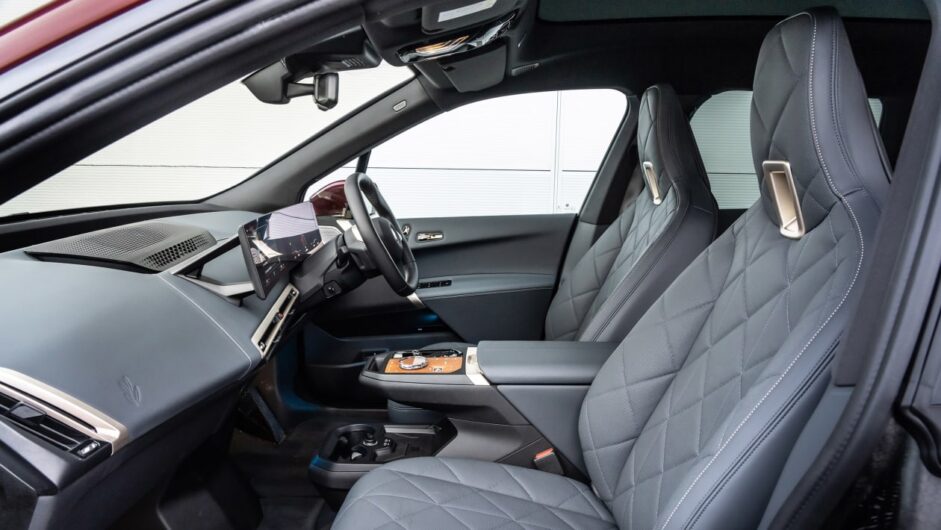
Prices and rivals
Another one of the iX’s big numbers is its price, which starts at $93,860 for the entry-level 40 model with its 71kWh battery pack and 400-kilometer or so range. However, upgrade to the 50 M Sport and its more acceptable 580-kilometer range and you’ll be in for $130,112. For the M60 you can add another $20k to that. The amount of standard kit is decent, but for the electrochromic glass roof, laser headlights or (fabulous) Bowers and Wilkins stereo, you’ll need to dip into the options list.
As for its rivals, Audi’s E-tron SUV is older, and based on a platform designed for combustion engines that makes it neither as efficient nor variable in its range. Base-level models start at around $9500 less than the iX entry point, with prices extending right up to the tri-motor E-tron S that at $118k rivals the 50 model in terms of performance and driving capability, but trails its estimated range by around 160 kilometers in the real world. Its interior is also no match for the newer BMW’s, but all of this is likely to be evened up when it’s updated next year.
The Tesla Model X is the iX’s other potential rival, but thanks to Tesla’s bizarre production cycle with no real indication of a possible timescale in the public domain either. Merc’s flawed EQC is absolutely annihilated by the BMW iX, so best wait for the EQS SUV if you’re dedicated to the three-pointed star, but here and now, there are no rivals that do what the BMW does. It’s a fantastic modern luxury car. You’ll just have to get used to the face.
This article originally appeared at evo.co.uk
Copyright © evo UK, Autovia Publishing

